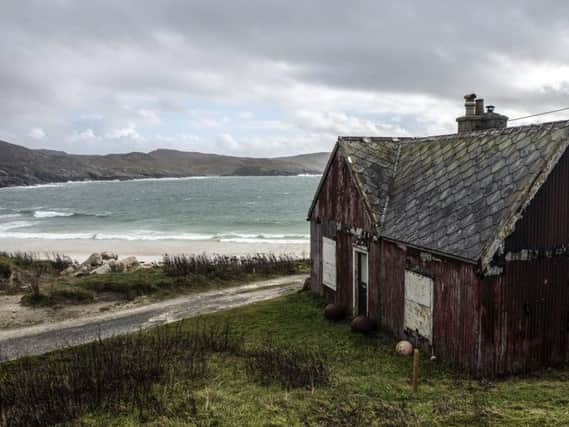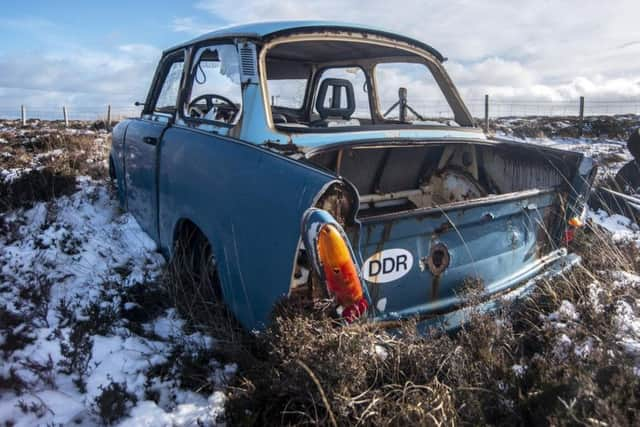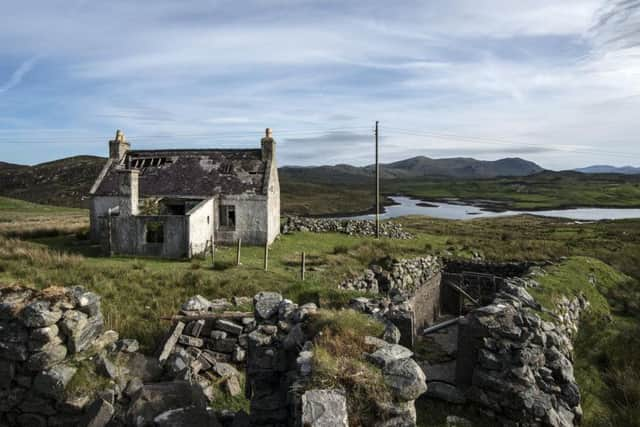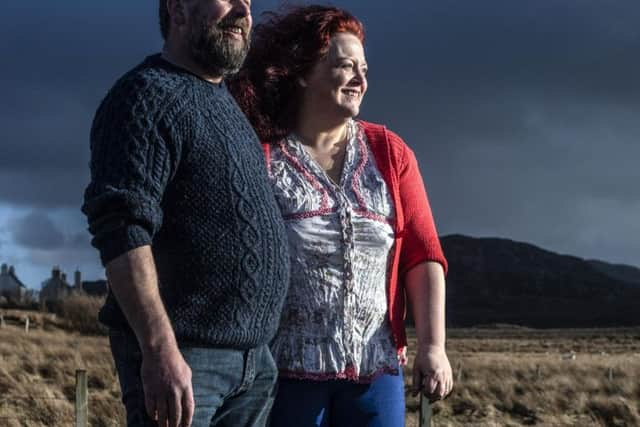Lewis and Harris: New photo collection reveals 'accurate' picture of island life


Photographer Alex Boyd has just release The Isle of Rust, a visual document of the two years he spent living and working on Lewis.
Mr Boyd said it was not his aim to produce picture postcard images of the island, but wanted to produce something different than to previous depictions of the islands."


Advertisement
Hide AdAdvertisement
Hide AdHe added: “I wanted to do something a little more balanced than the usual romantic representation of the islands. I wanted a more accurate depiction of island life.
You can take something familiar, and often thought of as uncontroversial, or unchallenging -such as landscape photography - and quietly insert elements which hopefully cause people to look at the land slightly differently.”
Crumbling crofts, rusting buses converted into storage sheds and abandoned weaving workshops are among the images that appear as Boyd sought to capture the changing traces of human settlement on the land over time.


Also included are the diverse island landscapes, from Callanish Stones, to the peat bogs to rocky moors and the mountains of Harris, all which are caught in fast moving, contrasting island light.
Mr Boyd said he had used a stripped down ‘Calvinistic’ approach to his work in order to find a visual truth.
He said: “I limited myself to minimal equipment: in this case a camera and two lenses which I could carry across moors or up mountainsides. I photographed things as I found them. There are no attempts to create postcard images, no specialist filters, no long exposures of the incoming tide at Luskentyre, no misguided attempts to create anthropological studies of the islanders.”
Mr Boyd, who lives in West Kilbride, relocated from the Central Belt to Lewis in 2015 with his wife to take up a job at An Lanntair arts centre, Stornoway.


He said: “We spent two years on the island, experiencing its stunning summer mornings, with mist hanging above the mirror lochs, through to its harsh winters, where wind and driving rain force you round the fire and keep you indoors for what feels like months on end.
Advertisement
Hide AdAdvertisement
Hide Ad“We slowly began to meet friends, mostly ‘incomers’ like ourselves who had moved to the Hebrides to experience a different way of living. We spent our time with people who had come from across the world to set up homes on Lewis and Harris and received such warmth and kindness during times of both happiness and hardship,”
Mr Boyd said he “really enjoyed” living on the island but did experience social isolation at points.
He added: “It is of course really quite different from living and working in the Central Belt. Social isolation is big and I did experience that. I spent an awful lot of time on my own. My wife went back to Australia for a while to get away from the winter.”
Writer and filmmaker Jonathan Meades contributes an essay to The Isle of Rust some 10 years after his Off Kilter series which included a feature on Lewis. The pair have corresponded for many years.
The photographer said he had been inspired by Meades’ direction to ‘emphasise the contrast between natural grandeur and scrap squalor’.
Mr Boyd said, as a result, images of Callanish Stones stand beside rusting car springs, sweeping bays alongside inverted cars and abandoned croft house complimented by the hills of Lewis.
He added: “My only consideration of Instagram audiences for this project was to omit images of fragile places on the islands - of beehive shielings for example. The negative consequences of social media and mass tourism are well known, which made me question which places should not feature among the pages of Isle of Rust. Some places should only be slowly revealed, others should be protected.
The Isle of Rust by Alex Boyd, is published now by Luath Press and priced £20. Signed copies are available from www.alexboyd.co.uk